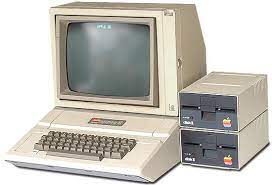On January 3, 1977, Apple Computer, Incorporated officially took its place in the burgeoning world of personal computing, marking a milestone in the tech industry that would eventually redefine how individuals interacted with technology. Founded by Steve Jobs, Steve Wozniak, and Ronald Wayne, Apple emerged as a key player in the Silicon Valley revolution and laid the groundwork for a company that would become synonymous with innovation and design excellence. The genesis of Apple can be traced back to the garage of Steve Jobs' parents in Cupertino, California. Jobs, along with his friend Steve Wozniak, who was a brilliant engineer, and Ronald Wayne, a less prominent member who would eventually sell his shares back to Jobs and Wozniak, embarked on a mission to make personal computing accessible to the masses. The Apple I, the company's first product, was introduced in 1976. It was a rudimentary but functional computer kit, featuring a motherboard designed by Wozniak. Priced at $666.66, the Apple I found its way into the hands of hobbyists and tech enthusiasts. The success of this initial venture laid the groundwork for the incorporation of Apple Computer, Incorporated on January 3, 1977. The year 1977 was a pivotal one for the fledgling company. It marked the release of the Apple II, a complete and fully assembled personal computer. Unlike its predecessor, the Apple II was a ready-to-use machine, complete with a keyboard, monitor, and a revolutionary color graphics display. This marked a significant step forward in making computers more user-friendly and accessible to a broader audience. One of the key contributors to the Apple II's success was the introduction of the VisiCalc spreadsheet software, the first of its kind, in 1979. This software transformed personal computers from mere gadgets into powerful tools for business and productivity, solidifying the Apple II's position in the market. The Apple II's success not only established Apple as a major player in the tech industry but also laid the foundation for the company's ethos of blending cutting-edge technology with elegant design. This emphasis on design and user experience would become a hallmark of Apple products in the years to come. Looking back, January 3, 1977, stands as a pivotal day in the history of personal computing. Apple Computer, Incorporated, set the stage for a series of innovations that would shape the trajectory of the tech industry. Steve Jobs and Steve Wozniak's vision of bringing computing power to the masses became a reality, with Apple's influence extending far beyond the boundaries of the Silicon Valley garage where it all began. The company's journey from the Apple I to the present-day Macs, iPhones, and iPads reflects not only technological evolution but also a commitment to pushing the boundaries of what is possible in the realm of personal computing.
3 January 1977 Apple Computer Incorporated
